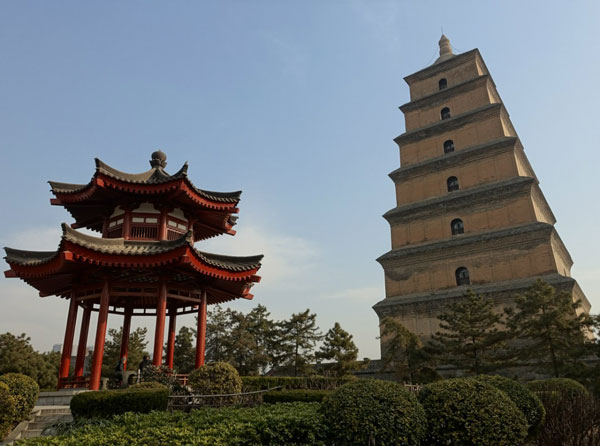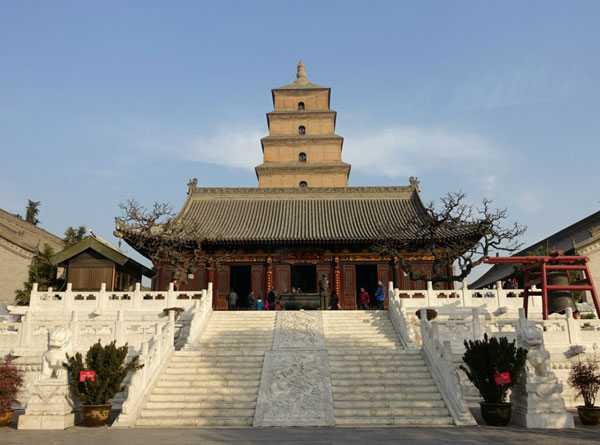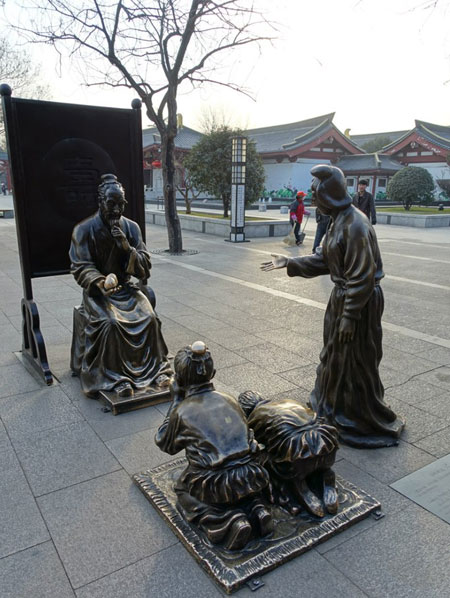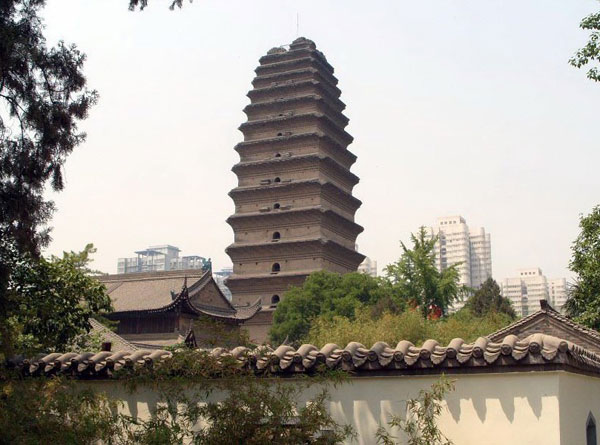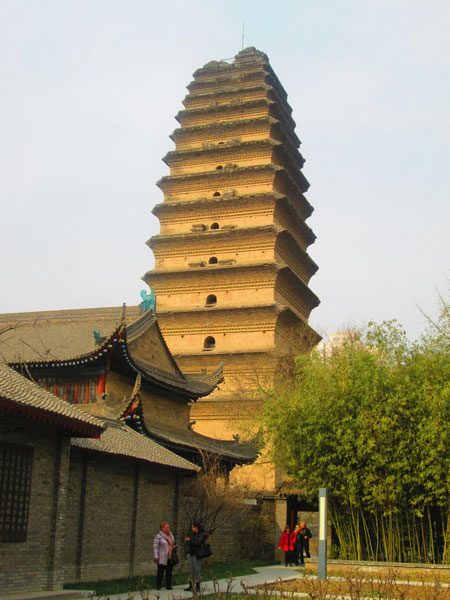Giant Wild Goose Pagoda or Big Wild Goose Pagoda (Chinese: 大雁塔; pinyin: Dàyàn tǎ), is a Buddhist pagoda located in southern Xi'an, Shaanxi province, China. It was built in 652 during the Tang dynasty and originally had five stories. The structure was rebuilt in 704 during the reign of Empress Wu Zetian, and its exterior brick facade was renovated during the Ming dynasty. One of the pagoda's many functions was to hold sutras and figurines of the Buddha that were brought to China from India by the Buddhist translator and traveler Xuanzang.Surroundings and history[edit]
The original pagoda was built during the reign of Emperor Gaozong of Tang (r. 649–683), then standing at a height of 54 m (177 ft). This construction of rammed earth with a stone exterior facade collapsed five decades later. The ruling Empress Wu Zetian had the pagoda rebuilt and added five new stories by the year 704.
A massive earthquake in 1556 heavily damaged the pagoda and reduced it by three stories, to its current height of seven stories.
The structure leans very perceptibly (several degrees) to the west. Its related structure, the 8th century Small Wild Goose Pagoda in Xi'an, only suffered minor damage in the 1556 earthquake (unrepaired to this day). The Giant Wild Goose Pagoda was extensively repaired during the Ming dynasty (1368–1644) and renovated again in 1964. The pagoda currently stands at a height of 64 m (210 ft) tall and from the top it offers views over the city of Xi'an.
The tower can be accessed from the Da Yan Ta station of line 3 of the Xi'an Metro. One entrance is located at the northeast corner of the north plaza. A new entrance will open later this year at the northwest corner of the north plaza.




